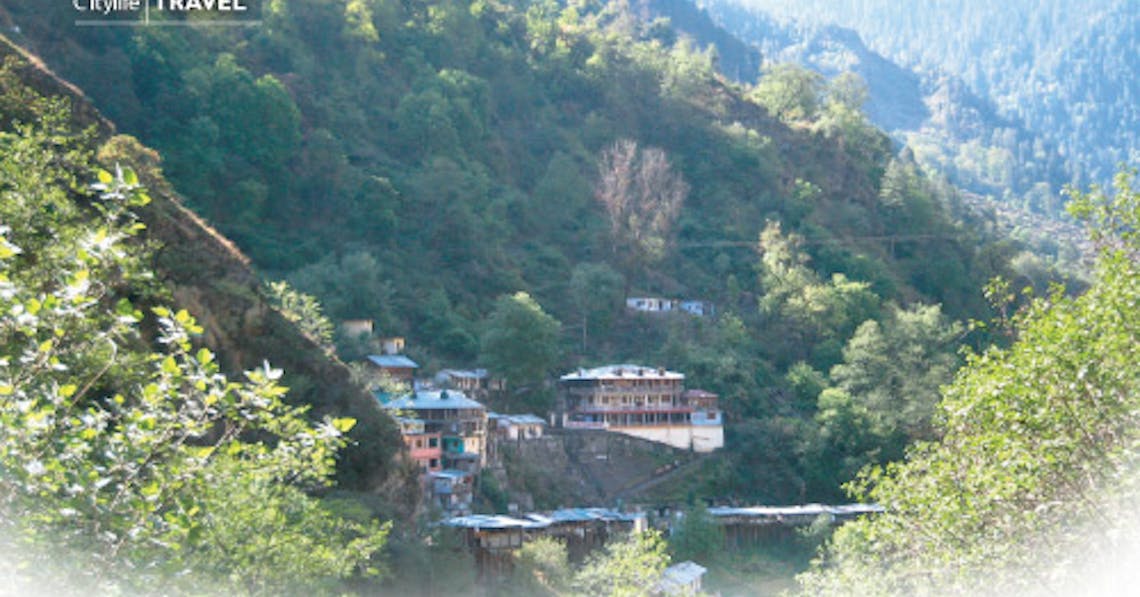In the North Indian state of Uttarakhand, 400 kilometres north of the nation’s capital at New Delhi, there is a narrow valley that Hindu pilgrims have visited for centuries. At the top of the valley lies the glacier known as Gaumukh that marks the source of India’s holiest river, the Ganges. Further down sits the town of Gangotri, an auspicious pilgrimage spot where hundreds of thousands of tourists come to pay homage to the river goddess Ganga, to beat the summer heat in the national parks, and to dunk themselves in the frigid waters that cleanse them of their sins and signify rebirth.
But I didn’t make it that far. Halfway up the narrow, winding valley to Gangotri is a seductive spot, a siren that lures travellers off their paths and traps us for days, even weeks at a time – the hot springs at Gangnani.
It’s like stepping into a fairy-tale or a scene that got dropped from Alice in Wonderland. Wildflowers and giant rhododendron trees blossom on the steep hills of the valley, pine trees cling to the slopes, the ferocious Ganges thunders down the river canyon while on all sides the Himalayan peaks glisten white like puffed-up desserts. Everywhere you look burst the young sprigs of wild marijuana plants, growing in a profusion that must be seen to be believed. On the hillsides above the springs one can even wander through fields of opium poppies, their thick bulbs bursting out into the sunshine.
While many travellers visit the region in the low season to enjoy the cheap accommodation, locally grown vegetarian food and the ubiquitous hashish, the pools of Gangnani are nonetheless a holy place of religious worship for Hindus. A temple to Shiva – one of Hinduism’s most important deities – lies above the pools and many pilgrims stop in here to make puja – an elaborate ritual offering performed by the local priests – and then cleanse themselves in the natural hot water of the springs.
Because the site is primarily for religious pilgrimage, development is limited to a few simple guesthouses and restaurants; alcohol and meat are not served – even eggs are hard to come by! Nonetheless the springs have a mellow, carefree vibe that feels utterly devoid of the kind of austerity one usually associates with a religious setting. Locals descend daily from the hills to frolic in the steamy pools, boys splash each other and even a cannonball into the hot springs is not particularly frowned upon. Travelling sadhus – India’s holy men and renunciants – are frequently stopping by Gangnani to load up a chillum, take a few puffs in honour of their god Shiva (himself a notorious stoner) and take a quick plunge in the pools.
Locals generally derive their income from livestock and agriculture, but many of them, especially women, manufacture charas, a kind of hashish made from rubbing the leaves of the cannabis plants. While it is technically illegal to smoke or possess charas in India, the plants are so utterly common, and their use is such an integral part of the culture, that police seem to pretty much leave it alone. Nonetheless, while many locals are happy to have foreigners buy and consume the charas they make, they don’t smoke it themselves.
The same goes for the opium poppies growing in abundance in the hills above Gangnani – locals produce the plants but do not process or consume opium. Wandering the hills you may feel tempted to photograph these Wizard of Oz opium fields, but if you are thinking of becoming the Papparazzi of the Poppies, keep in mind that locals are very sensitive about having their opium plants photographed. Photographing ganja plants doesn’t seem to be much of an issue.
As long as you keep the basic rules of respect for the local religion and culture in mind, you can visit Gangnani and pretty much do as you please. Probably the worst that can happen is getting stuck in dubiously ‘spiritual’ conversations with overeager Westerners – don’t say I didn’t warn you. A few sadhus like to latch on to western groups in search of free teas and joints – you can choose to accept these holy men into your company, or not. Who knows? They might have something to teach you after all. . . If sadhus, stoners, and metre-high opium poppies are not your thing, the area is rich in outdoor activities. The hills are crisscrossed with hiking trails, and many of the forests along the small roads to the villages surrounding Gangnani are a bird-lover’s paradise.
One thing is certain – a trip to Gangnani in the low season will not break anyone’s budget. Rooms with attached bath are a standard 100-150 INR S/D (about $2-2.50 USD) and vegetarian meals of Indian, Chinese and western fare might cost 50-70 INR. ($1-1.50 USD) At these rates, a price hike of about 300% in the high season (June-September) is hardly catastrophic. Dips into the hot springs are entirely free.
Gangnani Info Box
Gangnani is located in the state of Uttarakhand, on India NH 108 about 200 kms north of Rishikesh. Accessible by private car or bus from Rishikesh via Uttarkashi.
Accommodation at Hotel Rishi-Lok: Double room with attached bath, low season 150 INR; high season 300-500 INR. Contact: Daleep Rana +94 9756456623 (mobile), +94 10596653 (land).
